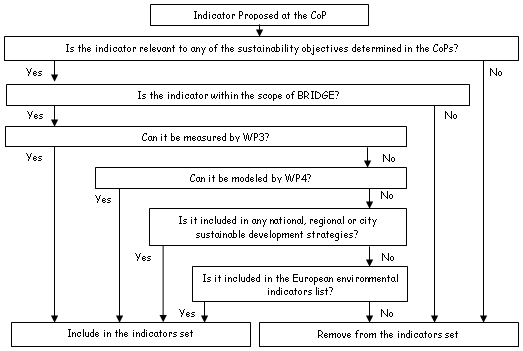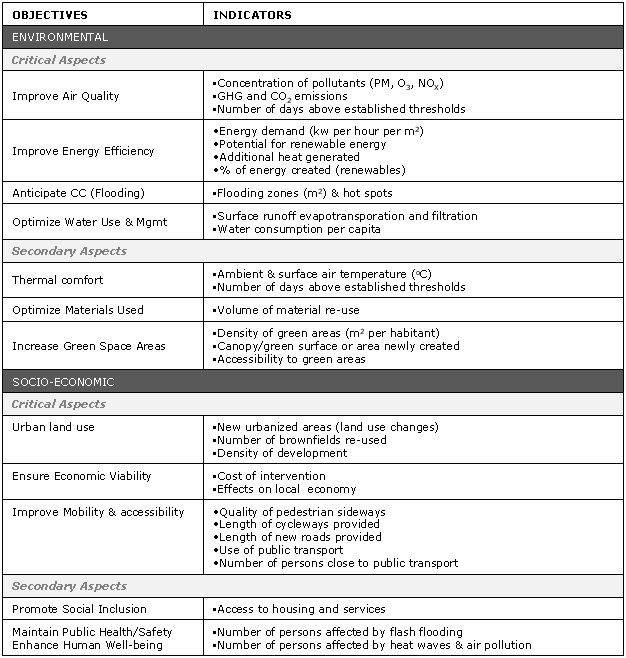Sustainability objectives and indicators in BRIDGE
BRIDGE entails the identification of sustainability objectives and indicators, which will be subsequently used for the assessment of planning alternatives in the DSS. These objectives and indicators have been developed in a participative manner, through a series of workshops undertaken in combination with the CoP meetings. These meetings have allowed identifying the key planning issues in the case study cities (refer to the section on Communities of Practice in BRIDGE for further information), as well as generic and case-specific objectives and indicators.
The outcomes of the meetings have been validated through a systematic approach. This entailed the revision of the objectives and indicators proposed at the first and second round of CoP meetings to obtain a final set, which was further discussed at the Umbrella CoP to reach a final consensus. The revision of CoP outcomes included comparison with existing sustainable development indicators at both European and national level, and validation with the measurements of WP3 and model outputs of WP4 (Figure 1). Therefore, indicators were included in the final set if they addressed the key sustainability objectives for the city, were within the scope of BRIDGE and were measurable/modellable within the project. Moreover, where an indicator was identified at the CoP but could not be provided by BRIDGE, it was still considered valid if included in any national/regional or European indicators list. Such indicators were also included in the final set as it was considered that indicator data/values were available and thus they could be potentially gathered and assessed through the DSS.

Figure 1. Indicator validation approach.
Proposed Objectives and Indicators
The planning issues discussed during the kick-off CoP meetings were generally connected to the international debate on urban sustainability issues, and are potentially common to a big range of cities. Consequently, the sustainability objectives could contribute to an international comparison of performances. These objectives commonly relate to indicators which are reflected also in international indicator sets used for cross-national assessments of urban sustainability making the performances in case study cities comparable among each other as well as among other European cities.
The indicators proposed at the first round of CoP meetings were reviewed to suit them to the specific assessment requirements of the relevant case study alternatives. Socio-economic and environmental indicators where separately discussed. The specific characteristics of the case studies largely shaped the revised set of sustainability objectives and indicators. In all cases, the proposed indicators targeted key considerations to be assessed and monitored in order to ascertain the success/failure of those planning interventions.
It is worth noting that the indicators defined in the second round of CoPs are only able to consider some of the generic and long term sustainability objectives defined at the city level in the previous round of CoPs, given the more limited range and scale of the spatial and sectoral plans proposed as case studies. Therefore, these indicators will not allow for comparability across case studies, as planning problems identified are not similar among the case studies, neither in scale nor in kind, and so also trends and values observed will vary between the single applications. Nevertheless, the indicators identified at this level may contribute to the building up of an operative indicator set for planning with urban metabolism, where record is kept on type of measurements used, composition of data in case of composite indicators, data availability etc.
The objectives and indicators identified in each city were discussed at the Umbrella CoP meeting, and an agreement on common objectives and indicators was reached among participants (Table 1). These environmental and socio-economic indicators are currently being validated and operationalised (in terms of their wording and units). The final set will be incorporated as default options into the DSS for the assessment of planning interventions.

